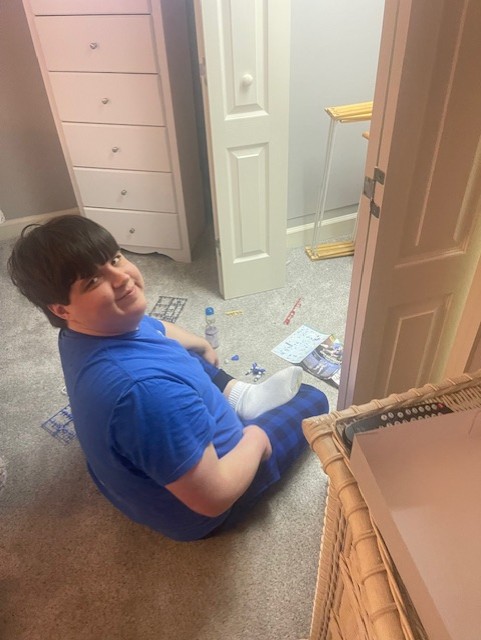1. **Nature Walks:** Explore local parks or nature trails where children can engage with the environment. Nature walks offer sensory stimulation and opportunities for physical activity while providing a calming atmosphere. We try to find parks close by so if Justin gets overwhelmed we can head home. This year we did Ruby Falls and he did great!
2. **Sensory-Friendly Outings:** Look for sensory-friendly events or venues in your area, such as museums or theaters that offer special accommodations for individuals with autism. These outings provide a supportive environment for children to explore and enjoy without feeling overwhelmed. Justin loves the museum because it’s quiet.
3. **Art and Craft Projects:** Engage children in creative activities like painting, drawing, or crafting. Art can be a therapeutic outlet for expression and sensory exploration, allowing children to relax and enjoy the process at their own pace. We are making birdhouses from tea pots this year.


4. **Structured Playtime:** Plan structured play activities that cater to your child’s interests and strengths. This could include building with LEGO sets, playing board games, or engaging in pretend play scenarios that encourage social interaction and communication skills. We took Gundams with us to the beach for him to build.
5. **Quiet Time Activities:** Create a quiet corner or designated space where children can retreat when they need a break from stimulation. We always make sure Justin has space to wind down. Provide calming activities such as reading books, listening to music, or sensory bins filled with materials like rice or sand for tactile exploration.

6. **Cooking and Baking:** Involve children in age-appropriate cooking or baking activities. Cooking together not only provides opportunities for learning and practicing life skills but also encourages sensory exploration through touch, taste, and smell.We all know Chef Justin will be cooking.
7. **Outdoor Adventures:** Plan outdoor adventures such as picnics, scavenger hunts, or simple gardening activities. We are getting our tomato Plants growing Outdoor play allows children to expend energy, experience nature, and practice social skills in a less structured environment.
8. **Relaxation and Mindfulness:** Introduce relaxation and mindfulness techniques to help children unwind and manage stress. This could include practicing deep breathing exercises, yoga poses, or guided meditation sessions tailored to their age and developmental level. We just started Pilates on line so we can do it at home.

Remember to prioritize your child’s comfort and preferences when planning activities, and be flexible to accommodate their needs throughout spring break. With patience, creativity, and understanding, you can create meaningful and enjoyable experiences for your child with autism during this time.

